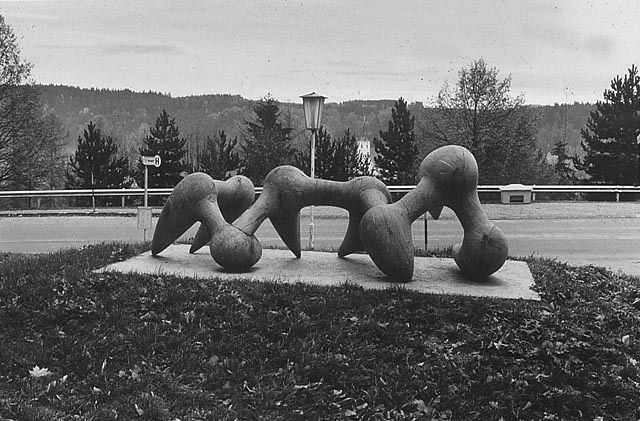Hermann Walenta
:
Drosendorf School
Back
Information
The sculpture entitled 'Modul' (Module) is a rhythmic modulation of three formal elements made of oak, each of which is anchored in the others. The repeated basic elements were inspired by years of work on organic growth in an archaic vegetative formal world.
The oak sculpture 'Modul' is an adapted form, a modulation, of three formal elements that are anchored one within the other, and arranged rhythmically. The basic elements, which attack frontally and are repeated in alternating rotation, have been borrowed from the world of archaic-vegetative forms and developed out of many years' study of organic growth – partly from previous sculptures. The organism that is shown stretching out here, composed of formal variations partly extending pincer-shaped and connected in egg-shaped joints, may be understood as a symbol of the subconscious life. Yet it is left up to the viewer's intuition to perceive (or overlook) the actual meaning of the work, which can of course only be mediated via the senses – in this case via the facial sense, but also via the sense of touch; for which neither language nor attempts at explanation suffice, because the latter are bound to consensus and notions are no substitute for perception. After all, it is the nature of art to show what cannot be said, analysed or organised conceptually. Even the process of giving something form is synthetic and intuitive and not analytical and intellectual: one gropes ahead blindly. The intellect only acquires the practical implementation, the technical know-how. The idea, the starting point, is immediate and pictorial. Art is formed in accordance with it, beyond the intellect and the potential for respective reasoning of the practising artists. Even they only know sporadically what they are actually conveying, because their intellect, too, just like everybody else's, is directed towards the outside. The inner processes out of which everything grows remain in the dark. Working backwards they can draw conclusions... but then anyone can do that...
(Hermann Walenta)

